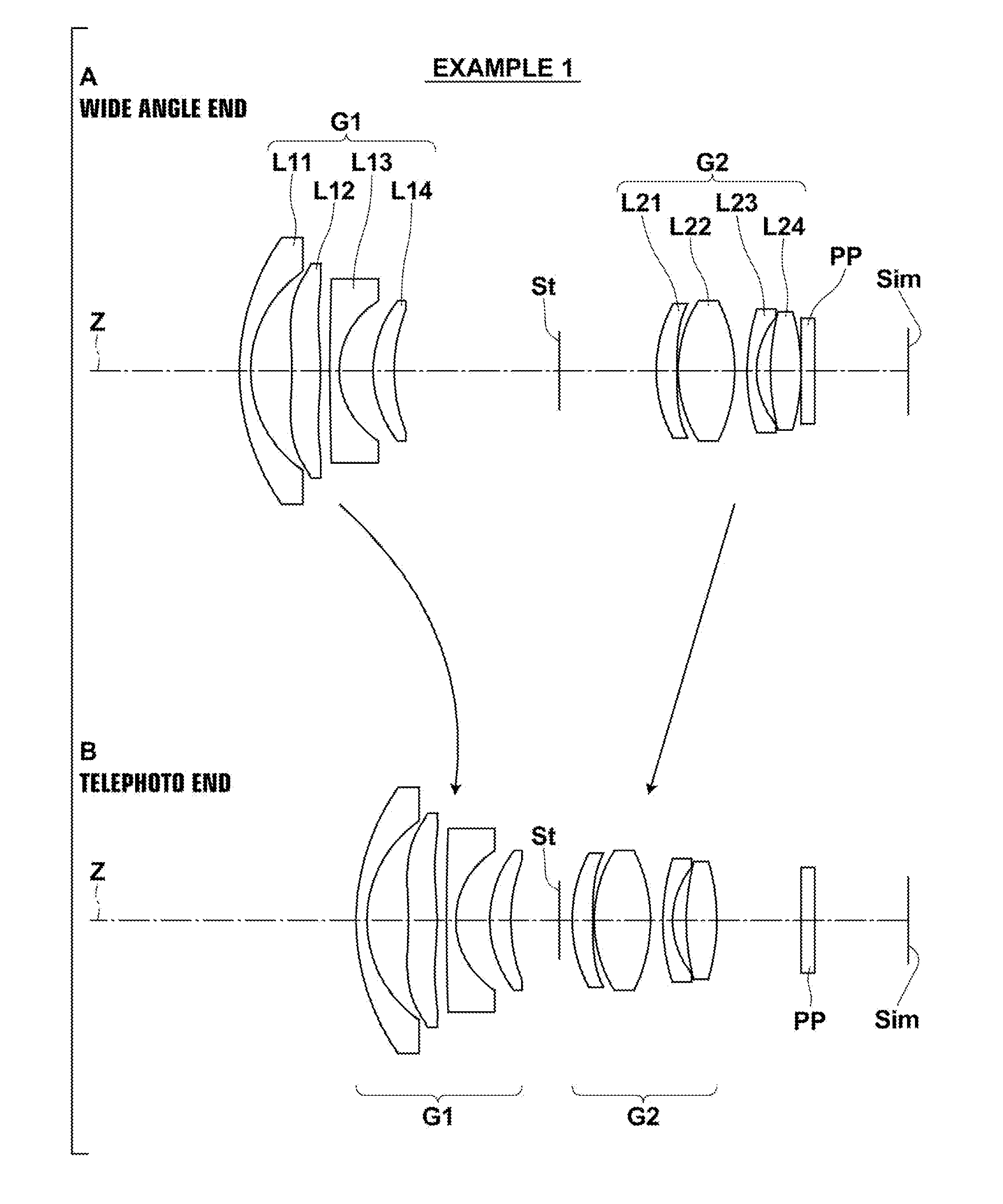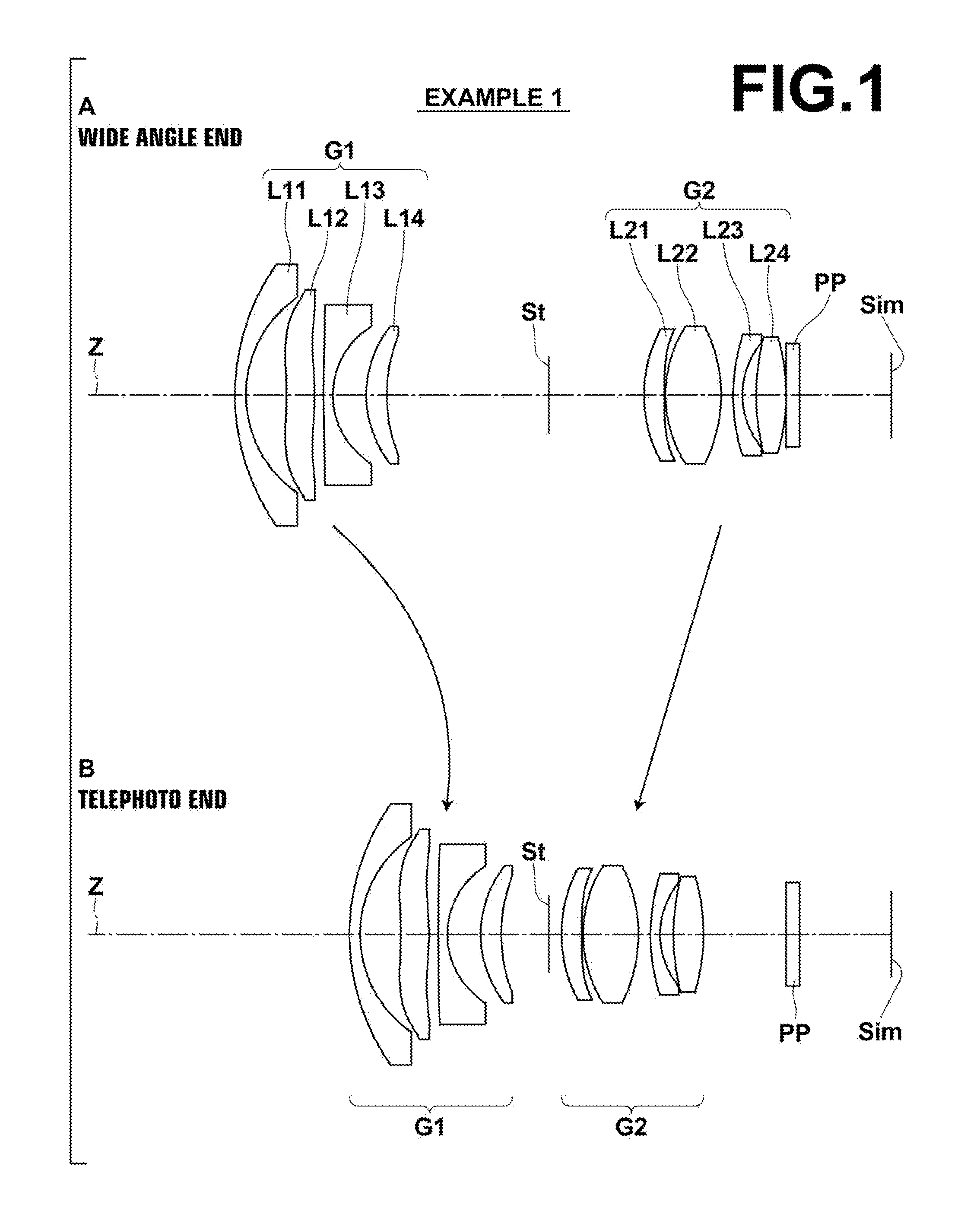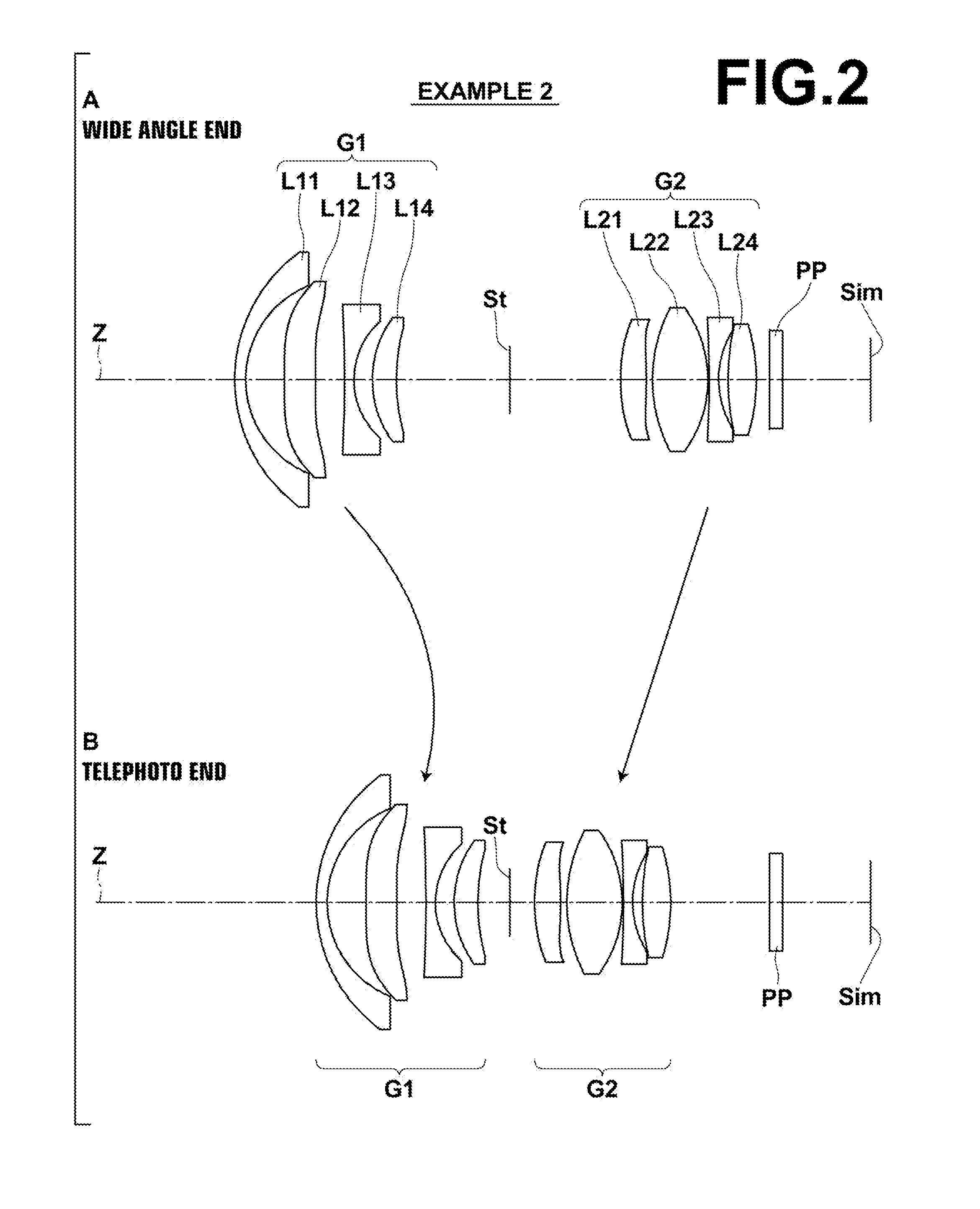Zoom lens and imaging apparatus
a zoom lens and imaging apparatus technology, applied in the field of zoom lenses, can solve problems such as high cost, and achieve the effects of reducing aberrations, reducing costs, and reducing costs
- Summary
- Abstract
- Description
- Claims
- Application Information
AI Technical Summary
Benefits of technology
Problems solved by technology
Method used
Image
Examples
fourth embodiment
[0095]The first lens group G1 is constituted by a first lens L11 having a negative refractive power, a second lens L12 having a positive refractive power, a third lens L13 having a negative refractive power, and a fourth lens L14 having a positive refractive power, provided in this order from the object side. Here, the first lens L11 may be a negative meniscus shaped lens, the second lens L12 may be a lens having an aspherical surface toward the object side and an aspherical surface toward the image side, the third lens L13 may be a negative meniscus shaped lens, and the fourth lens L14 may be a positive meniscus shaped lens, as illustrated in the example illustrated in FIG. 1. Note that the fourth embodiment employs a lens having a negative refractive power as the second lens L12.
second embodiment
[0096]The surface of the second lens L12 toward the object side is of an aspherical shape which is concave toward the object side in a paraxial region. In addition, at least one of the surface of the second lens L12 toward the object side and the surface of the second lens L12 toward the image side is of an aspherical shape with at least one inflection point within a range from the center to the effective diameter thereof (both surfaces in the example of FIG. 1). Note that particularly in the second embodiment, the surface of the second lens L12 toward the object side is convex toward the object side in the paraxial region and is of an aspherical shape that does not have any inflection points within a range from the center to the effective diameter thereof.
[0097]Meanwhile, the second lens group G2 is constituted by a first lens L21 having a positive refractive power, a second lens L22 having a positive refractive power, a third lens L23 having a negative refractive power, and a four...
PUM
 Login to View More
Login to View More Abstract
Description
Claims
Application Information
 Login to View More
Login to View More - R&D
- Intellectual Property
- Life Sciences
- Materials
- Tech Scout
- Unparalleled Data Quality
- Higher Quality Content
- 60% Fewer Hallucinations
Browse by: Latest US Patents, China's latest patents, Technical Efficacy Thesaurus, Application Domain, Technology Topic, Popular Technical Reports.
© 2025 PatSnap. All rights reserved.Legal|Privacy policy|Modern Slavery Act Transparency Statement|Sitemap|About US| Contact US: help@patsnap.com



